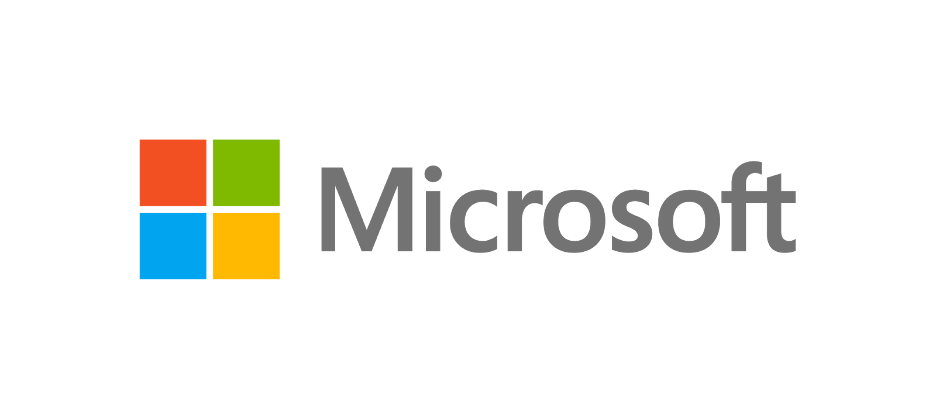Microsoft (NYSE: MSFT) released its Q4 FY2024 earnings report last Tuesday. Its earnings showed solid early adoption of 365 Copilot, including a surge in seats and large deployments. Despite outperforming analyst predictions on revenue, Microsoft shares fell as much as 7% in after-hours trading that day. This seemed to be a reaction to the company’s slight miss on growth in its main cloud-computing business, which highlights the market’s heightened sensitivity to any indication of slower-than-anticipated AI adoption.
CFO Amy Hood said on the earnings call that the distinguishing factor “between being at the higher end or at the lower end [of guidance] really was some softness we saw in a few European [geographies] on non-AI consumption.” She also noted, “Commercial bookings were much better than we expected going into the quarter. . . . The larger long-term commitments were better than we expected.”
Microsoft CEO Satya Nadella said that Copilot 365 “is on a growth rate faster than any other previous generation of software” that the company has launched as a suite.
Here’s an overview of the numbers.
Performance versus Expectations
- Q4 FY2024 revenue: $64.7 billion, up 15% year over year (Expected:$64.37 billion)
- Q4 FY2024 diluted EPS: $2.95, up 10% YoY (Expected: $2.93)
- Full fiscal year 2024 revenue: $245.1 billion, in line with analysts’ expectations
- Full fiscal year 2024 net income: $88.1 billion, in line with analysts’ expectations
Other Key Numbers
- Q4 FY2024 Microsoft Cloud revenue: $36.8 billion, up 21% but below analyst expectations of $37.2 billion
- Q4 FY2024 operating income: $27.9 billion, up 15%
- Q4 FY2024 net income: $22.0 billion, up 10%
- Q4 FY2024 revenue for Productivity and Business Processes: $20.3 billion, up 11%
- Office Commercial products and cloud services revenue: up 12%, driven by Office 365 Commercial revenue growth of 13%
- Office Consumer products and cloud services revenue: up 3%, and Microsoft 365 Consumer subscribers reached 82.5 million
- LinkedIn revenue: up 10%
- Dynamics products and cloud services revenue: up 16%, driven by Dynamics 365 revenue growth of 19%
Analyst Notes
In the context of generative AI, Microsoft recognizes two relevant customer groups: companies using Azure to develop generative AI chatbots and end users interacting with these chatbots. While both groups are crucial, this analysis will primarily concentrate on the end users, exploring the impact of generative AI on the experiences of workers and consumers—and how it ultimately impacts the company’s AI-driven growth.
Driving Copilot Adoption
Nadella highlighted Copilot’s potential to replicate the productivity gains already attained in software engineering (for example via GitHub Copilot) across other business functions. He emphasized Copilot’s role in transforming how knowledge and frontline workers approach their tasks. “We think of this as really a new design system for knowledge and frontline work to drive productivity, which will be very akin to what has happened in software engineering,” he said. “[Non-developers] will come to all of these functions as they think about their work, workflow, and work artifact all being driven by Copilot.”
Microsoft’s efforts to simplify the process of introducing and scaling Copilot across organizations are paying off. The company has implemented several initiatives to drive Copilot adoption, including the Copilot Academy in Viva Learning, the Copilot Dashboard for monitoring transformation progress, Copilot features in Viva Engage to assist leaders with communications, and the Copilot Deployment Kit in Viva Amplify to facilitate rollout campaigns.
These initiatives aim to educate users, track adoption metrics, and provide AI-powered change management assistance. I believe this is a smart move that will likely help organizations make the most of their Copilot investment and help them track Copilot’s ROI—and thereby justify its cost. Microsoft’s most recent Work Trend Index reveals a compelling case for investing in AI education: those who use AI multiple times weekly save at least 30 minutes daily and experience significant benefits. These “power users” report a boost in creativity (92%) and a heightened focus on crucial tasks (93%). They also noted that AI usage increases motivation and enjoyment at work (91%).
In the analyst Q&A, Nadella emphasized the potential growth of AI in CX. “[Business apps] is probably the category that gets completely transformed with GenAI, contact centers being a great example,” he said. “We ourselves are on course to save hundreds of millions of dollars in our own customer support and contact center operations. I think we can drive that value to our customers.”
A Teams Win
Also notable in this quarter’s earnings was the skyrocketing adoption of Microsoft Teams Premium, which now has over 3 million seats in use, a YoY increase of roughly 400%. Major organizations such as Eli Lilly and Ford are opting for the advanced features that Teams Premium offers, including end-to-end encryption and real-time translation. This demonstrates that the platform’s value proposition resonates with enterprise customers.
Microsoft Teams shows great potential for further growth and innovation driven by AI capabilities. Copilot in Teams could drive significant productivity improvements and enable new ways of working across different business functions.
Microsoft’s Pressures
- Microsoft must clearly articulate how it will accelerate its revenue growth after pouring tens of billions of dollars into generative AI.
- Apple’s introduction of Apple Intelligence puts pressure on Microsoft to highlight the unique value proposition of Copilot in Windows and ensure that its easy integration and robust privacy features compete effectively in the AI-powered productivity market.
- The recent global outage affecting Windows machines, triggered by a faulty CrowdStrike update, exposes inherent risks associated with Microsoft’s dependence on third-party security software. Despite not being directly responsible for the incident, Microsoft faces challenges in maintaining control over its ecosystem and ensuring the stability of its operating system when it interacts with external components.
- Microsoft acknowledged in the earnings call that it must manage the constraints on its AI capacity. These constraints could potentially impact the company’s ability to meet the surging demand for AI-powered services, leading to delays or missed opportunities.
Looking Forward
The company set its Q1 FY2025 revenue forecast between $63.8 billion to $ 64.8 billion; the middle of the range, $64.3 billion, is $800 million below the consensus estimate of $65.1 billion for the September quarter.
According to CFO Amy Hood, Microsoft expects to spend more on CapEx in fiscal 2025 than in the just-finished fiscal 2024. The company used $13.9 billion of cash on capital expenditures last quarter, largely for AI, a 55% jump from the same quarter a year ago. Microsoft spent $55.7 billion on CapEx for the full fiscal year, up 75% from the prior year.
While Microsoft has expressed confidence about meeting soaring customer demand for AI, it faces the challenge of converting its investments into tangible revenue. As the industry awaits clear evidence of AI’s profitability, Microsoft’s ability to monetize AI will be closely watched.
Recent MI&S Research on Microsoft
2024 Microsoft Work Trend Index Shows Shifting Workplace Dynamics — By Melody Brue — July 12, 2024
Microsoft’s Copilot+ PCs Have Changed What It Means To Be An AI PC — By Anshel Sag — June 26, 2024
RESEARCH NOTE: Copilot Growth and the Impacts of AI — Microsoft (MSFT) Q3 2024 Earnings — By Melody Brue and Patrick Moorhead — May 2, 2024
RESEARCH NOTE: Microsoft (MSFT) Reports FY 2024 Q2 Earnings — By Melody Brue and Patrick Moorhead — February 2, 2024
























































































